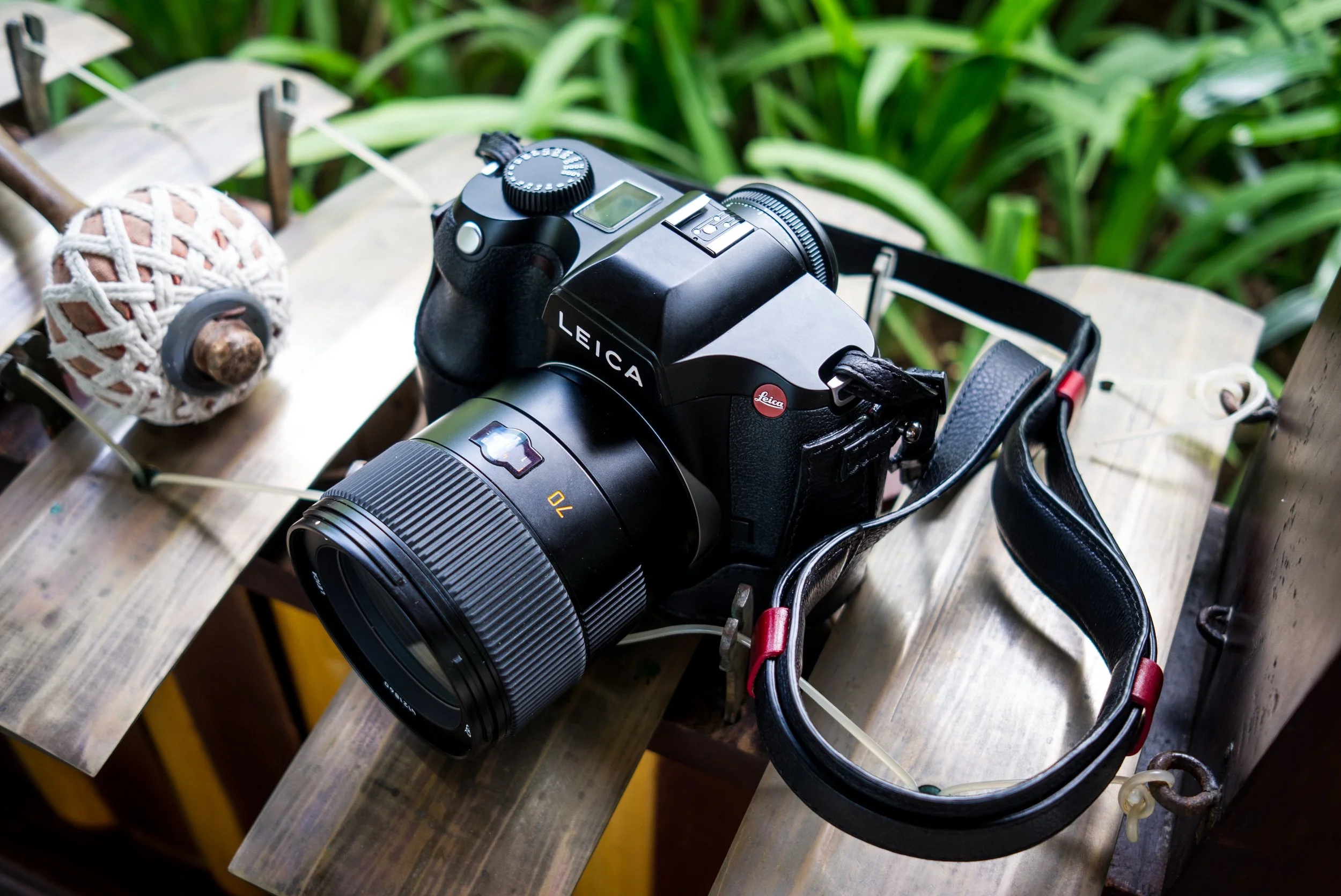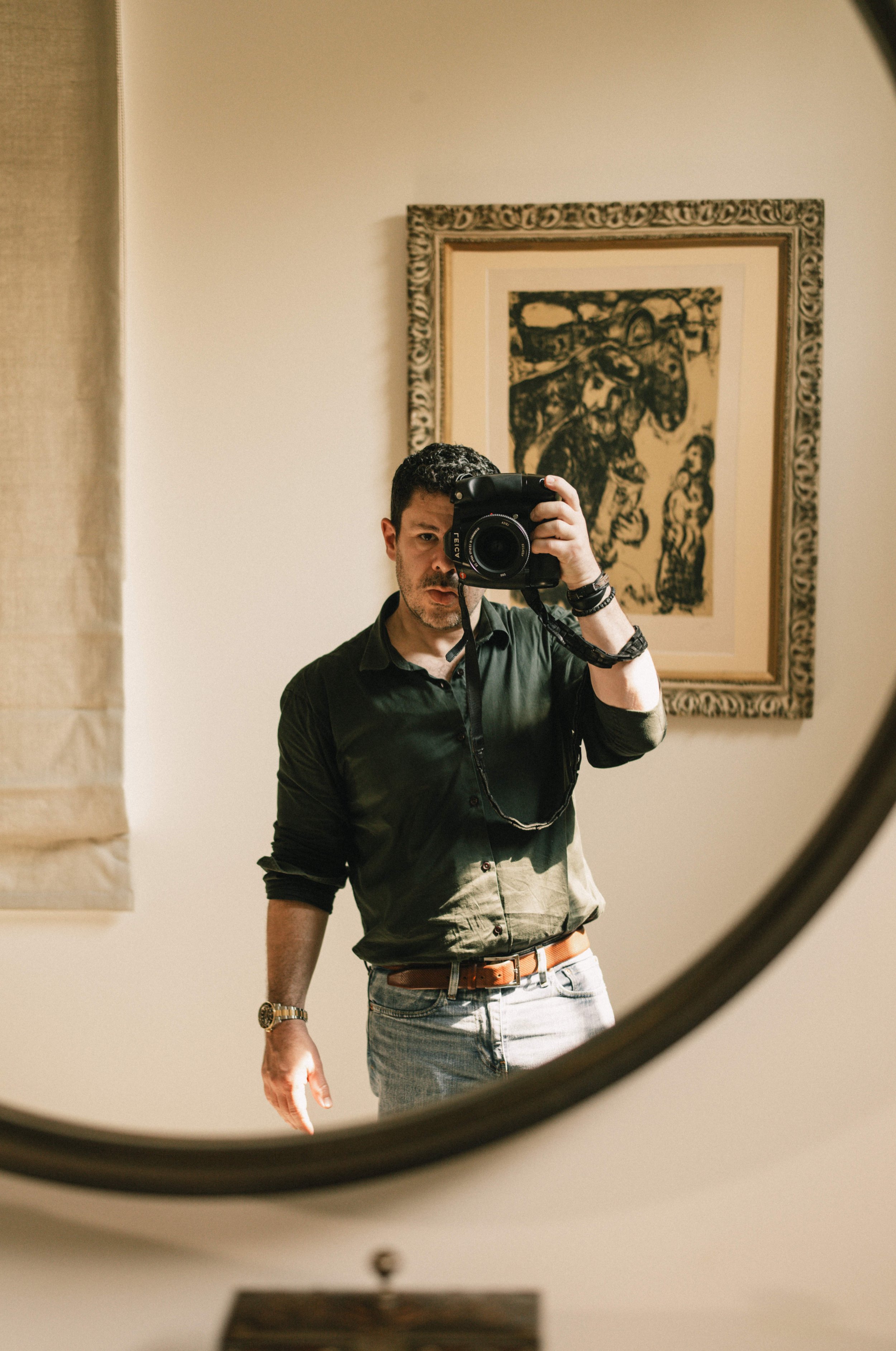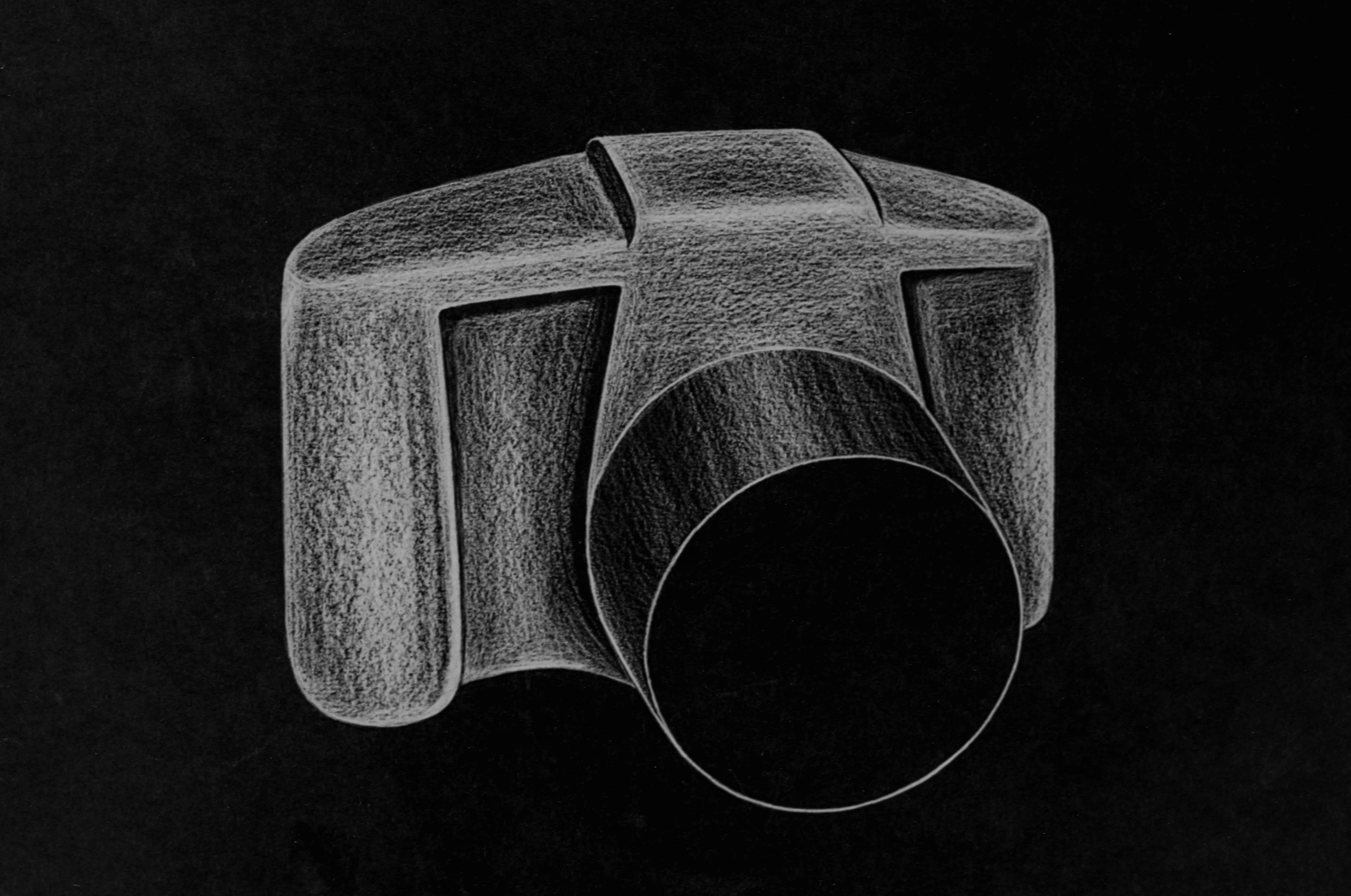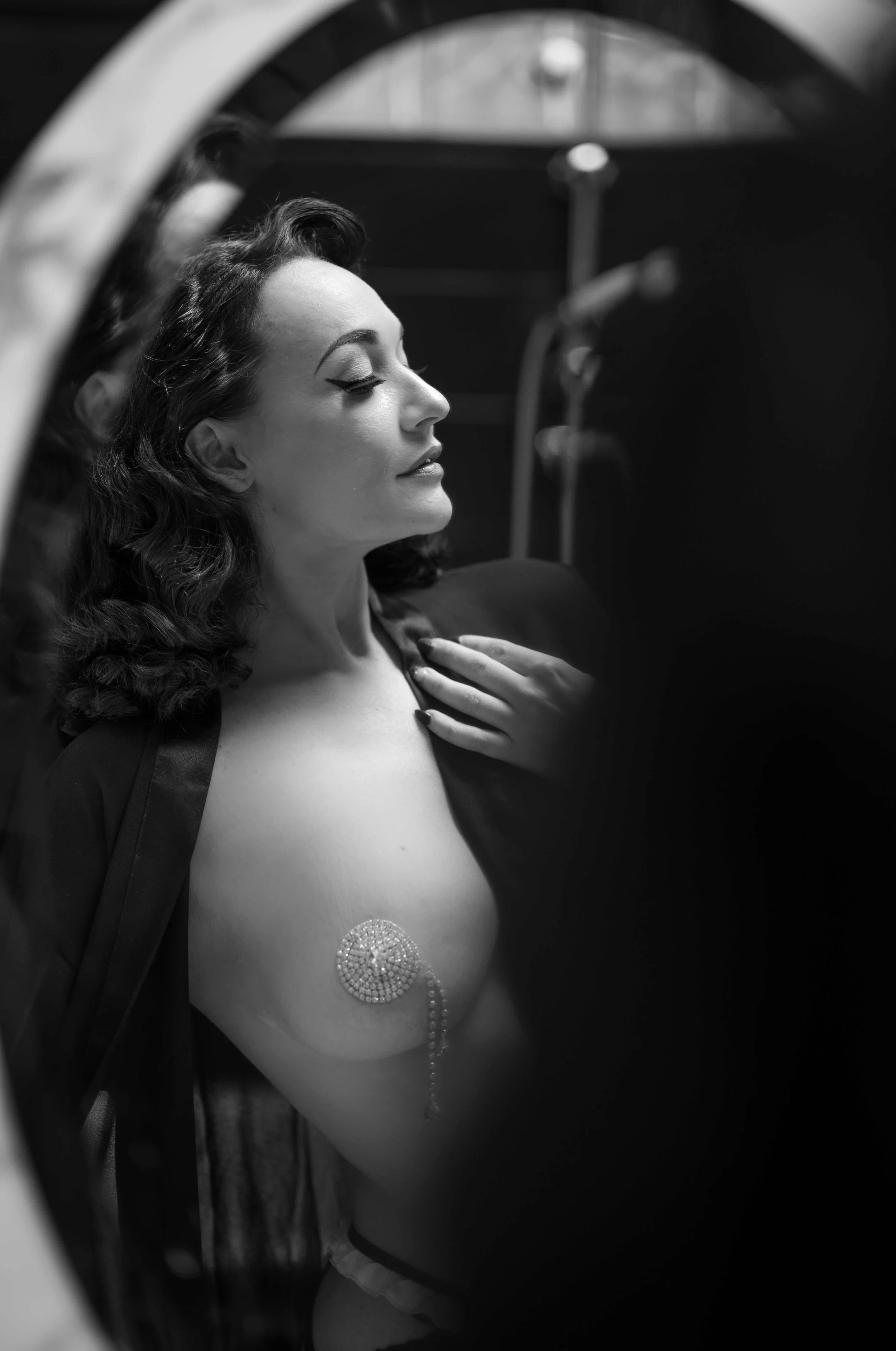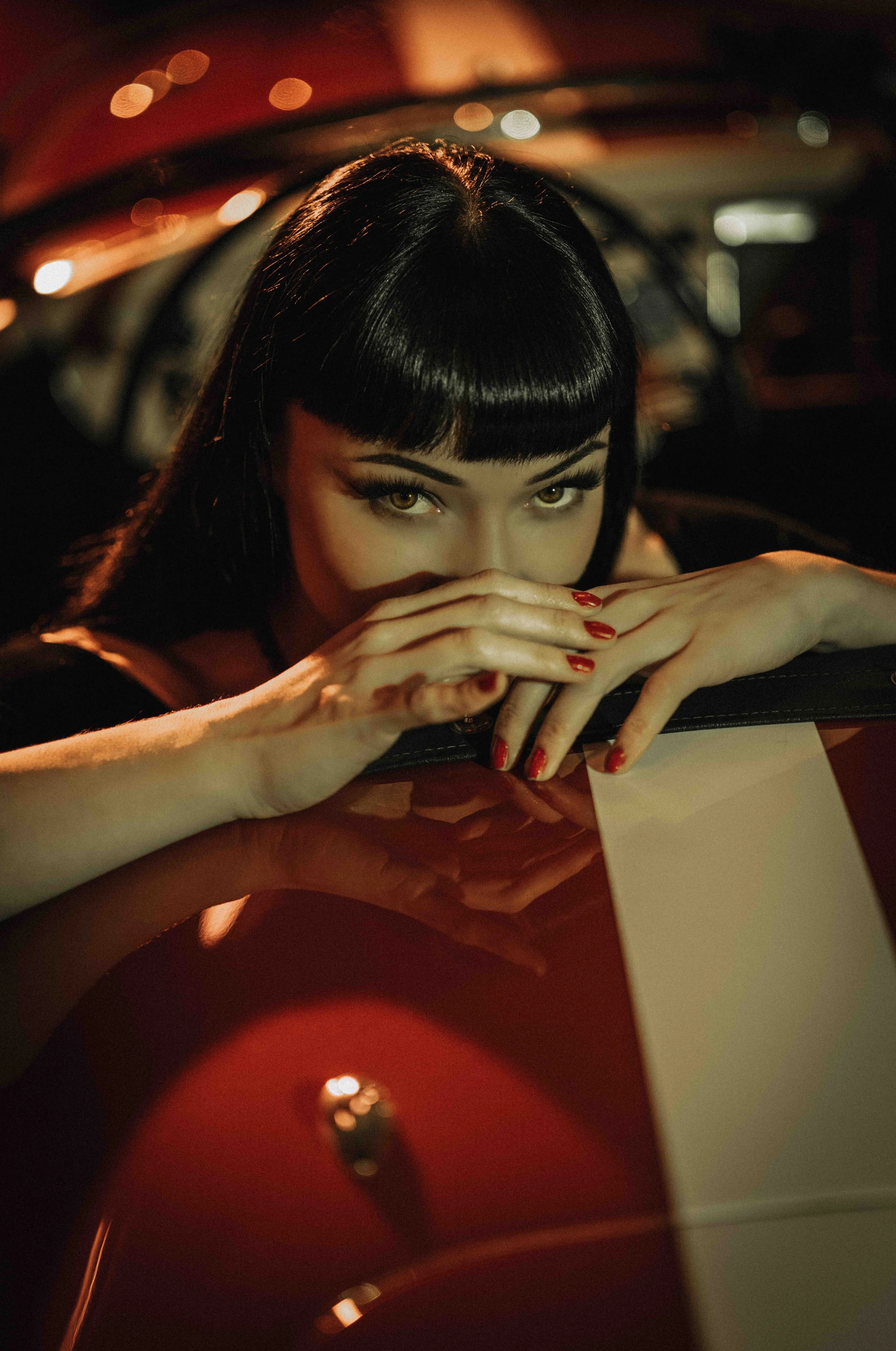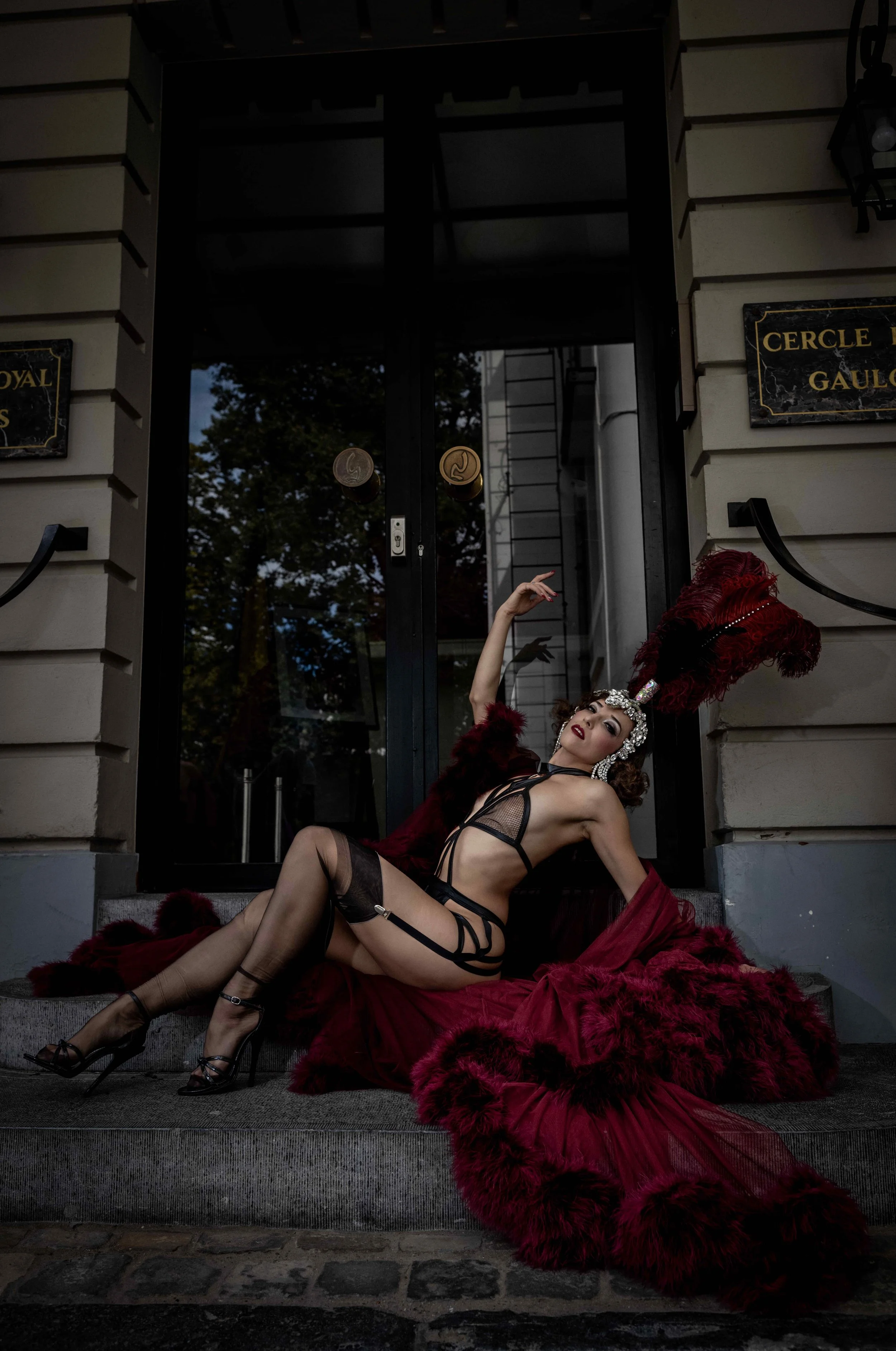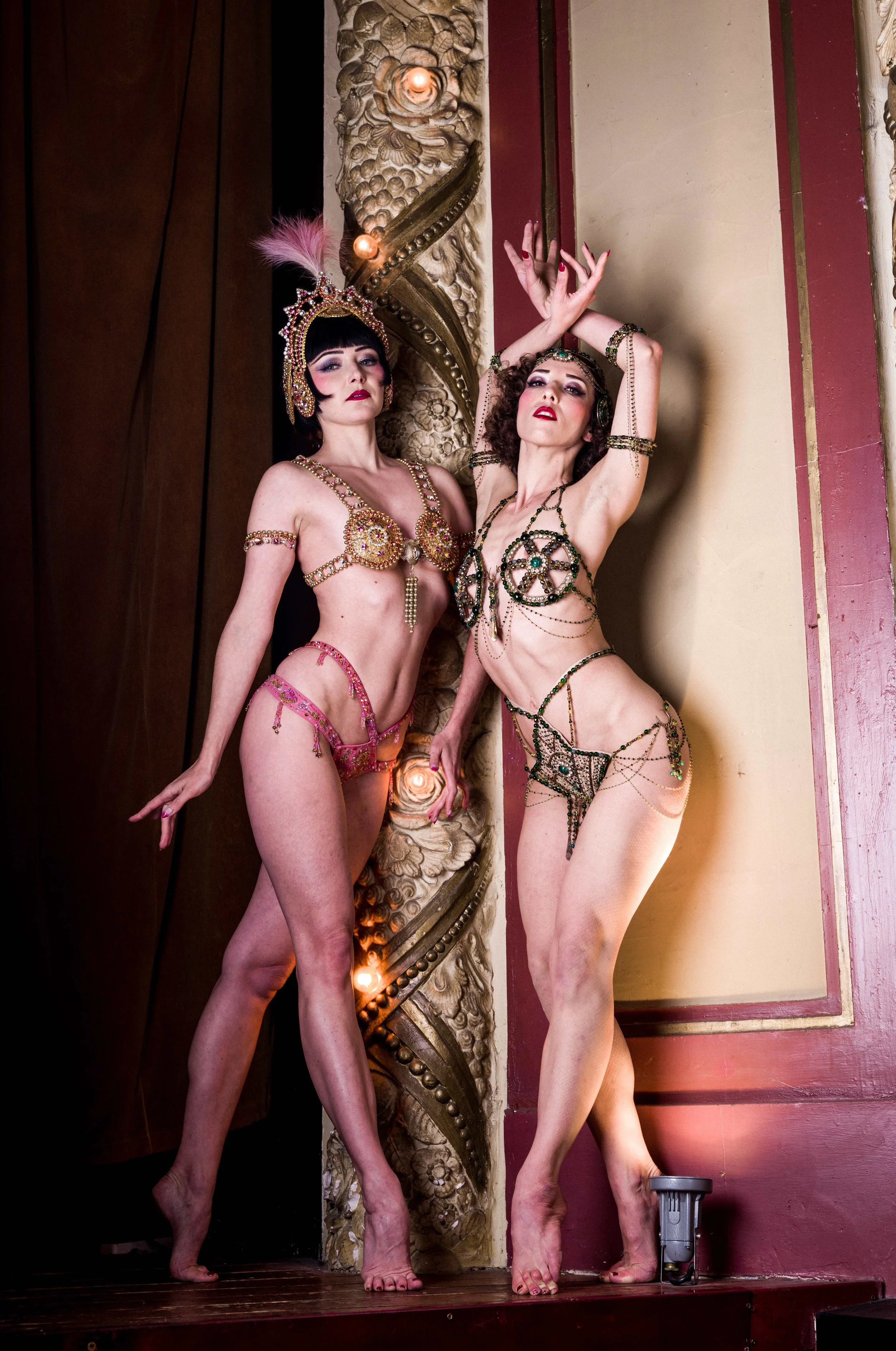The One: The Leica S
The Last of the Mohicans – A Revolutionary Medium Format Camera
Leica S2 with Summarit-S 70mm f2.5 CS - Milan Swolfs
The Leica S2 was introduced as the successor to the Leica R series, a full-frame manual-focus DSLR. While Leica had long been a pioneer in the small/full-frame format, in 2009, they took a bold step into larger-sensor territory with the launch of their first medium-format camera—the Leica S2. Designed in collaboration with Meinzer Design of Dortmund, Germany (the same firm behind the Leica R8), the S2 was a groundbreaking departure from traditional medium-format systems.
Despite being one of Leica’s most advanced camera lines, the S-series has remained somewhat of an underappreciated gem—a forgotten big brother in the Leica lineup. Officially discontinued in 2023, Leica continues to offer repairs and has even hinted at the possibility of a successor.
Unlike other medium-format cameras of its era—such as the Hasselblad H series and Phase One modular systems, which were primarily built for studio work—Leica redefined the category by creating a fully weather-sealed, handheld medium-format DSLR. Built from the ground up with a native S-mount and a 37.5MP sensor, the S2 became the first practical medium-format camera designed for outdoor use.
Leica’s Vision for the S-System
Leica set out to improve upon existing medium-format digital backs and cameras by introducing a system that combined the image quality of medium format with the usability and handling of a 35mm DSLR. Their goals included:
Delivering a simple, intuitive, yet highly customizable control interface
Offering both a focal plane shutter for fast, available-light shooting and a central shutter for high-speed flash sync
Extending battery life beyond what was typical for medium-format systems
Ensuring superior build quality with extensive weather and dust sealing—on both the body and lenses—to take medium format beyond the studio
Enhancing camera responsiveness and shooting speed
Improving focus accuracy
Incorporating DSLR-like conveniences such as dual memory card slots, HDMI output, Wi-Fi capability, and customizable presets
Setting new standards in optical performance across the entire lens lineup, with faster maximum apertures and minimal need for software correction
Though the S-series featured a single-point autofocus system—slow by modern standards—it was reliable. Users had to master the "focus and recompose" technique, which, while requiring skill, ultimately became a rewarding method for precise focusing.
From the S2 to the S3, the Leica S lineup consistently offered dual memory card storage, supporting both CF and SD cards—ensuring flexibility and redundancy for photographers in the field.
Leica S007 with Summarit-S 70mm f2.5 CS - Milan Swolfs
Who Is the Leica S For?
The Leica S system was primarily designed for professional landscape and portrait photographers who demanded the highest image quality. However, in my experience, many passionate amateurs were also drawn to it, appreciating the unique satisfaction that comes with using the system.
Despite its capabilities, the S remains a rare sight—even among dedicated Leica users. It’s uncommon to see in the wild, yet the Leica User Forum still maintains an active section for S-system enthusiasts, proving its loyal following.
This is not a camera built for fast-paced action, wildlife, bird photography, or sports. However, I have successfully used it for event coverage and, most importantly, as my go-to tool for portrait photography.
Leica S007 with Summicron-S 100mm f2 - Milan Swolfs
Why I Choose the Leica S as My Weapon of Choice
If you've ever worked with me, you know I shoot slowly and deliberately. I approach photography with a clear vision of the final result and always share that vision with my models. To me, photography is 10% technique and 90% communication.
From the moment I first saw the Leica S and flipped through the pages of S Magazine, I knew this camera was special. Its tank-like build, intuitive four-button design, and breathtaking image quality immediately drew me in.
I still remember making the bold decision to trade my first Noctilux f/0.95 to acquire my first Leica S2 system. With just the 70mm f/2.5 kit lens in hand, I was hesitant at first. My good friend and dealer, Patrik, let me borrow the camera to test, and from the very first shots, I was hooked. The colors, sharpness, and beautiful fall-off were mesmerizing—especially at a time when Leica’s SL system and SL APO lenses didn’t yet exist.
Using the S system gave me the same thrill as shooting with a Leica M rangefinder—that pure, tactile joy of nailing a shot. The massive optical viewfinder allowed for precise composition, and while the shutter was loud, it had a wonderfully analog feel.
Over the years, I have used every Leica S camera—from the S2 to the S3—and today, the S3 remains my main camera for serious work. That said, the S is a heavy camera, and working with it for an entire day can be physically demanding. I’ve traveled with the S system and up to three lenses, but unless you're deeply committed to your photography, I wouldn’t necessarily recommend it. This is a camera that rewards patience and precision—but it also demands a lot in return.
So why do I still choose the S over any other system today? Three reasons: the lenses, the sensor, and the files.
The image files are incredibly malleable, and the photos feel organic—the perfect blend of sharpness, contrast, and just the right amount of bokeh. I can pull details from deep shadows, recover highlights effortlessly, and focus entirely on what matters most—starting with the model and working outward to the surroundings. The images pop, and when I nail the shot, I know the file will give me everything I need to achieve my vision. Most importantly, the photos straight out of the camera already look stunning. The colors are exceptionally true to life, and the sensor provides that extra something—a depth and richness that sets it apart from standard full-frame sensors.
Leica S-Selfie, Leica S3 - Milan Swolfs
The Sensor: The Heart of the Leica S
At the core of the Leica S system is its Pro Format sensor, measuring 30×45mm—a full 60% larger than a standard full-frame (24×36mm) sensor. While it’s not as large as a traditional 645 medium format sensor, it retains a 0.8x crop factor, resulting in wider effective focal lengths.
For example, a 35mm S lens translates to a 28mm equivalent in full-frame terms:
📏 35mm × 0.8 = 28mm FF Equivalent
This unique sensor size strikes the perfect balance—offering the enhanced image quality and depth of medium format while remaining more compact and manageable than traditional medium-format systems.
I’ll dive deeper into S lenses in a future post, but for now, let’s take a look at the history of the Leica S system.
The Evolution of the Leica S
Leica S2 (2008) – A Revolution in Medium Format
In 2008, Leica introduced the S2, a groundbreaking 37.5MP Kodak CCD sensor camera powered by the Maestro image processor. Unlike traditional modular medium-format systems—often bulky and designed primarily for studio use—the S2 redefined medium format by packing a large sensor into a 35mm DSLR-sized body.
At its core, the S2 featured Leica’s latest-generation 6µm pixel architecture Kodak CCD sensor, delivering a signature look with deep color depth and tonal range.
The ISO range of the S2 spanned 160 to 1250, though in practical use, I wouldn’t recommend going beyond ISO 320–640. However, with recent software improvements in Adobe Lightroom, noise reduction makes ISO 1250 more usable than before.
The Leica S design, Leica S3 with Summicron-S 100mm f2 - Milan Swolfs
Leica S (Typ 006) (2012) – Refining the Classic
By 2012, Leica refined the S2 concept with the S (Typ 006). While it retained the same 37.5MP CCD sensor, several key improvements made it a more refined and user-friendly system:
Integrated GPS for geotagging images
Faster autofocus for better usability
Double the buffer rate for quicker shooting
Better high ISO performance (up to ISO 1600 in practice it was not that a big improvement over the S2)
A redesigned menu system for a more intuitive user experience
Interestingly, Leica didn’t name this camera the S3 but instead opted for S (Typ 006)—in line with their naming conventions at the time (e.g., M240, M246).
⚠️ CCD Corrosion Warning
Like the Leica M9, both the S2 and S006 are susceptible to CCD sensor corrosion. If you’re considering a second-hand purchase, check whether the sensor has been replaced by Leica Customer Care.
Leica S3 with Summarit-S 70mm f2.5 - Milan Swolfs
Leica S (Typ 007) (2015) – The CMOS Revolution
In 2015, Leica introduced the S007, its first medium-format camera with a CMOS sensor. While the CCD look of the S2/S006 was highly regarded, the CMOS sensor brought vastly improved ISO performance, making the S007 a more versatile tool for low-light and professional work.
At first glance, the S007 looks nearly identical to its predecessor, the S006, which in turn resembles the original S2. The core design philosophy remained the same, but under the hood, Leica introduced over 80 improvements—most notably:
New 37.5MP CMOS sensor, co-developed with CMOSIS
Maestro II image processor for faster performance
15 stops of dynamic range for stunning tonal control
Expanded ISO range (100–12,500), with practical usability up to ISO 3200
3.5 FPS burst rate, making it the fastest medium-format DSLR of its time
Leica also refined ergonomics and controls, while dramatically upgrading internal components to improve image quality and shooting speed.
The Live View Revolution
One of the most significant upgrades was Live View—the first of its kind on a Leica S camera. With a 60 fps refresh rate and accurate exposure simulation, Live View introduced a new level of precision:
Contrast-detect autofocus, allowing pinpoint accuracy anywhere in the frame
Joystick-based focus selection, ideal for off-center compositions
Highlight/shadow warnings, focus peaking, and exposure simulation—perfect for ND filters and complex lighting setups
I often use Live View for critical focusing or when working on a tripod—especially after switching to continuous lighting by Harlowe Creators, which lets me shoot at lower ISO settings without increasing noise.
4K Video in a Medium-Format Body
The S007 was also the first medium-format camera to offer 4K video recording. However, video mode cropped the sensor to Super 35 rather than utilizing the full lens coverage—a limitation later addressed in the Leica S3.
Final Thoughts on the S007
While not a radical redesign, the Leica S (Typ 007) represented a major leap forward. It successfully blended the legendary image quality of its predecessors with modern conveniences, making it the most versatile S-series camera yet. For those looking to balance medium format depth with high-speed shooting, low-light performance, and advanced focusing tools, the S007 remains a powerhouse.
Leica S007, Summicron-S 100mm f2 - Milan Swolfs
The Last One: The Leica S3
The Leica S3, the final model in the S-System lineup, refined Leica’s medium-format DSLR concept to near perfection.
Though announced in 2018, the first deliveries only started in late 2020. The major update? A 64MP CMOS sensor, while retaining the 45mm x 30mm sensor dimensions that define the Pro Format of the S-System.
I had the chance to beta test the S3 in January 2019, and while my early version had some minor technical issues, Leica ironed them out. Today, I can confidently say that my S3 has never let me down—it remains a workhorse for serious photography.
Lolly & Cake, Leica S3, Summarit-S 70mm 2.5CS - Milan Swolfs
A Familiar Body with a New Heart
The S3 shares much with the S007—same body, same controls—but the sensor received a major upgrade. Until the S007, Leica had stuck with 37MP CCD and CMOS sensors. With the S3, they jumped to 64MP while introducing a dual-gain architecture for better dynamic range and ISO performance.
Leica also expanded the ISO range from 100-12,500 (S007) to 100-50,000 (S3)—a 1 to 1.5-stop improvement. From my experience, the S3 is usable up to ISO 6400, though the S-System demands high-quality lighting to truly shine.
Despite this, the S3’s high-ISO images retain a wonderful grain, making it a great tool for black-and-white conversions. While most Leica purists prefer the Monochrom series, the S-System delivers exceptional B&W tonality.
Refined Color Science & The Red Advantage
Leica reformulated the color filter array in the S3, and the improvement is most noticeable in red tones. The reds are now more accurate, which I tested extensively in a shoot featuring a red Lamborghini Diablo—the results were stunning.
Beyond color, Leica also extended exposure times, which is more relevant for landscape photographers than my portrait work.
Why I Switched from the S007 to the S3
My main reasons for upgrading:
Higher resolution (64MP vs. 37MP)
Better skin tones
More accurate reds
At my latest exhibition, many prints were shot on the S3, and I personally printed large-scale images for both clients and my home—the results were simply out of this world.
The S3 might seem old-school compared to modern digital cameras like the M11 or SL3, but for me, the files remain unmatched. The tonality, the fall-off, and the organic quality of S-System images have no equal.
Even though S lenses are technically slower than some M and SL lenses, they are in a league of their own in terms of rendering and quality.
Flo & Chess, Leica S3 Summarit-S 35mm f2.5 ASPH - Milan Swolfs
Handling & Focusing
The S3 features a 3" LCD with 920,000 dots—clear and bright enough for checking focus, menus, and histograms.
Autofocus: Slightly faster than the S007, but still not fast by modern standards.
Low-light AF: Can hunt a little, but the phase-detect AF is extremely accurate when locked.
I use back-button focusing, activating AF with the joystick—this gives me the most precise control over focus.
💡 A tricky lens: The Summicron-S 100mm f/2 has an extremely shallow depth of field, making autofocus more challenging. Sometimes, even when focusing on the eyes, the eyelashes or eyebrows end up in focus. For best results, I use AF with manual fine-tuning (MF override).
Laura B, Leica S3 Summicron-S 100mm f2 ASPH, wide open
Mirror, Balance & Stability
The mirror slap is smooth and quiet
No in-body stabilization, but the camera balances well in hand
The heft of the camera actually helps with stability
4K Video – Now with Full Sensor Readout
The S3 finally allows full-sensor 4K recording—something the S007 lacked (which only recorded in Super 35 crop).
However, there’s a limitation:
No HDMI output for 4K recording
4K can be recorded directly to an SD card
This was a disappointment for videographers, but since I primarily shoot stills, it wasn’t a dealbreaker for me.
Final Thoughts: The End of the S-Era
The Leica S3 represents the pinnacle of the S-System—a refinement rather than a revolution, but a worthy send-off for one of Leica’s most ambitious projects.
While the S-System is now discontinued, and Leica’s focus has shifted toward the SL and M lines, the S3 remains my go-to tool for serious work.
The files have a unique quality that modern full-frame cameras can’t match. If you’ve ever opened an S-Series RAW file, you’ll immediately recognize the depth, pop, and richness that define the system.
For those willing to embrace its weight, deliberate pace, and niche quirks, the S3 is an absolute masterpiece—and, for me, one of the best cameras Leica has ever made.
Fay in the Mercedes-Benz SL250, Leica S3 Summarit-S 35mm f2.5 ASPH - Milan Swolfs
What I Love About the Leica S Line
The Files—Nothing Comes Close
The Leica S files are simply unmatched. They offer a unique combination of depth, dynamic range, and tonal richness that I haven’t found in any other system. The ability to push shadows and highlights almost endlessly makes them incredibly malleable in post-processing.
Beyond just technical performance, the color science is sublime. Skintones straight out of camera are near perfect, with rich, natural colors that don’t require much correction. The falloff from in-focus to out-of-focus areas is smooth and organic, lending images a cinematic quality that makes them instantly recognizable.
Flo, Leica S3 Summarit-S 35mm f2.5 ASPH - Milan Swolfs
The Glass—The Best in the World
While my M lenses are my jewels, the S lenses are my workhorses—and the best lenses ever made for my kind of photography.
Cinematic yet sharp – They sit perfectly between the extreme sharpness of SL lenses and the magical rendering of M glass.
Beautiful transitions – The way they handle depth of field and tonal transitions is unmatched.
Mechanical manual focus – Unlike modern fly-by-wire focusing, S lenses still have real mechanical MF, making manual focusing a tactile, precise experience.
SL lenses may be technically sharper with higher microcontrast, but for portraiture and artistic work, nothing beats the organic, filmic quality of S lenses.
The Viewfinder—A True Optical Experience
While I’ve grown accustomed to EVFs in recent years, there’s still something magical about an optical viewfinder—especially one as large and bright as the S-System’s. Looking through real glass, instead of an electronic screen, connects you more intimately to the scene.
The S-System—A Real Camera, Not a Computer
The Leica S still feels like a true camera—not just a digital processing device.
The mirror slap
The tactile focusing
The shutter sound
All of these elements come together to make shooting on an S-System camera a visceral experience. Unlike modern mirrorless cameras that feel more like tech gadgets, the S still feels like a camera in the purest sense.
Chanelle & Thomas, Leica S3 Summarit-S 35mm f2.5 ASPH - Milan Swolfs
Build Quality & Ergonomics
The S-Series build quality is second to none. It feels robust, luxurious, and purpose-built.
Even though modern Leica cameras have moved to more complex interfaces, I still prefer the clean and intuitive 4-button layout of the S cameras.
The Leica S3—L’enfant terrible of the Camera World
While the rest of the industry has gone mirrorless, the S-System stubbornly sticks to its roots.
The S3 is like the enfant terrible of the camera world—it doesn’t conform, it doesn’t rush, it just does what it does best, slowly but surely.
What Could Be Improved?
Faster Autofocus – A more reliable AF system in low light and more AF points would be game-changing. If Leica could match the AF performance of the SL2, the S-System would be unstoppable.
Better Focus Confirmation – If Leica added focus aids like those found in the M, Q, and SL cameras, it would make manual focusing far easier.
Higher Resolution – A 100MP sensor would bring the S-Series into the future.
Mirrorless Future? – While I love the DSLR experience, I wouldn’t be opposed to an EVF-based S camera—as long as there’s an adapter for S lenses.
Can you imagine using the Summicron-S 100mm f/2 on a medium-format mirrorless Leica with advanced autofocus and multiple AF points?
My Favorite S Lenses
Leica set out to create a new standard in optical quality with the S lenses, prioritizing superior design over software corrections. While many manufacturers rely on digital processing to fix optical flaws, Leica aimed for optical excellence straight from the lens, reducing aberrations without artificial intervention.
This commitment to quality is reflected in Leitz Cine's Thalia lenses, which are based on Leica’s S medium format glass. As Leitz Cine describes:
"Ranging from 20mm to 180mm, the Thalia lenses are built upon Leica’s S medium format glass, renowned for its incredible portrait rendering, rich colors, and stunning skin tones."
A Carefully Crafted Lens Lineup
Leica took time to develop a complete S lens ecosystem, covering focal lengths from 24mm to 180mm. While most of the promised lenses made it to production, the rumored 350mm telephoto was never released.
Today, the lineup consists of nine native autofocus lenses (eight primes and one zoom), plus a manual-focus 120mm tilt-shift lens, originally designed by Schneider.
When the first-generation S2 camera debuted in 2008, it launched with two initial lenses: the 70mm and 180mm. Shortly after, the 35mm and 120mm were introduced, forming the foundation of the system. Over the years, additional designs—including the 30mm, 45mm, and 100mm—filled in the gaps, creating a well-rounded selection for medium format shooters.
Optical Speed & Performance
Leica’s S lenses are not the fastest in aperture compared to full-frame primes, but within the medium format world, they stand out. Compared to Hasselblad H lenses and Schneider Kreuznach Blue Ring lenses, the S lenses offer faster apertures, making them better suited for available-light shooting.
That said, the S system thrives in good lighting—its lenses aren’t designed for extreme low-light conditions but instead excel in delivering natural, rich, and cinematic rendering.
Important Note for Second-Hand Buyers
If you’re considering a second-hand S lens, check whether the autofocus motor has been replaced. In 2015, Leica acknowledged a known issue: a firmware update increased AF speed, but it also caused premature motor failures in some lenses.
If the lens was serviced after 2017, it likely has the updated non-failing motor.
If serviced before 2017, it may still have the old motor and could be prone to failure.
Verifying service history before purchase can save you from potential autofocus issues down the line.
Lauro Guglielmini Leica S3 with Summicron-S 100mm f4, 1/350, ISO 200 - Milan Swolfs
Summarit-S 35mm f/2.5 (Equivalent to 28mm f/2 in Full Frame)
While I don’t often shoot 28mm on full-frame, the Summarit-S 35mm f/2.5 has completely won me over in the S system. It offers natural rendering, subtle yet beautiful bokeh, and minimal distortion—the latter of which is easily corrected in post.
As one of the original four lenses introduced for the system and the first wide-angle option, the 35mm Summarit-S remains a standout. With a fast f/2.5 aperture and a versatile 28mm equivalent field of view, it excels in low-light situations and is an excellent choice for environmental portraits, allowing for greater scene inclusion without excessive perspective distortion.
Chanelle De Mai, Leica S3 Summarit-S 35mm f2.5 - Milan Swolfs
Elmarit-S 45mm f/2.8 (Equivalent to 35mm f/2 in Full Frame)
I’ve used the Elmarit-S 45mm f/2.8 extensively, though I don’t currently own one—but I’m still considering adding it to my kit. This lens offers a natural, balanced look, behaving much like a 50mm on full-frame while maintaining the wider perspective of a 35mm.
In terms of optical quality, this is one of the sharpest lenses in the S lineup. It delivers stunning image clarity, beautiful out-of-focus rendering, and a natural depth that makes it a fantastic choice for both portrait and documentary work. However, it is quite heavy and long, which might be a consideration for those looking for a more compact setup. The only real drawback is its minimum focus distance (MFD) of 0.6m, which isn’t ideal for close-up work.
Summarit-S 70mm f/2.5 (Equivalent to 55mm in Full Frame)
The Summarit-S 70mm f/2.5 is the go-to lens for most photographers entering the S system. Often referred to as a "kit lens," it is far from ordinary—this lens delivers exceptional image quality and a unique rendering that reminds me of the 50mm Summilux f/1.4 in M mount.
With its gorgeous bokeh and a beautifully natural look, the 70mm Summarit is perfect for portraits and close-ups, thanks to its minimum focus distance (MFD) of 0.5m. As the very first lens introduced in the S system, it serves as a fast and reliable normal lens, roughly equivalent to a slightly longer 50mm on full-frame.
It's also the lightest and most compact of the S lenses, making it a great everyday choice. Modeled after the legendary 50mm Summilux-M ASPH, it shares the same crisp in-focus rendering with smooth, dreamy bokeh. This is by far my most-used S lens, and likely one of the most reliable in my portfolio.
Janet Fischietto, Leica S007 Summarit-S 70mm f2.5 CS - Milan Swolfs
Vario-Elmar-S 30-90mm f/3.5-5.6 ASPH
Originally the most expensive lens in the S portfolio, the Vario-Elmar-S 30-90mm can now be found for less than half its original price on the used market. Functionally, it’s equivalent to a 24-70mm zoom in full-frame terms, offering versatility at the cost of speed compared to the prime lenses in the system.
While the f/3.5-5.6 aperture range makes it slower than fixed primes, it still delivers excellent image quality and is incredibly useful for fast-paced shooting environments. I’ve used this lens during photoshoots where I didn’t have time to swap lenses, or when I needed the flexibility to switch between a wide and portrait focal length on the fly.
At 90mm and f/5.6, it still provides decent background separation, though not quite on the level of a fast prime. My main issue with zooms in general—especially coming from a prime lens background—is that I often find myself using them at their longest focal length, essentially treating them like a fixed lens instead of taking advantage of their variable focal range.
If the Vario-Elmar-S 30-90mm had a faster maximum aperture, I might use it more frequently. However, it’s an excellent travel lens if you're willing to carry the heavier S system. It covers landscapes, environmental shots, and portraits well during the day, and for low-light or shallower depth-of-field portraits, pairing it with the Summicron-S 100mm f/2 would be ideal.
Mara & Chanelle Leica S007 Vario-Elmar-S 30-90mm f/3.5-5.6 ASPH - Milan Swolfs
Summicron-S 100mm f/2 (Equivalent to 80mm in FF)
This is the Noctilux of the S lenses—the most unique and characterful lens in the entire S lineup. It has a distinct rendering style, setting it apart from the rest of the system. As I mentioned earlier in this review, it’s a tricky lens to master, but when you nail the shot—oh boy, it’s magic.
Some of my all-time favorite portraits have been taken with this lens. The 3D pop and subject separation it creates are truly special, while still maintaining the sharpness and signature look of the S sensor. While it may not be as surgically sharp as the APO-Macro-Summarit 120mm, it offers a beautiful softness and organic quality that makes it perfect for portraiture—especially when photographing women.
For many, this lens alone is a compelling reason to invest in the S system. If you’re looking for a lens that delivers gorgeous depth, dreamy bokeh, and a unique character, the Summicron-S 100mm f/2 is simply unmatched.
Fay Loren, Leica S3 Summicron-S 100mm f2 - Milan Swolfs
APO-Macro-Summarit-S 120mm f/2.5
One of the first four lenses developed for the S system, the 120mm APO-Macro-Summarit-S is simply a masterpiece. With an equivalent focal length of roughly 100mm, this lens is astonishingly sharp, even wide open.
For me, this lens serves three key purposes:
A phenomenal macro lens – offering 1:2 reproduction for detailed close-up work.
An incredible telephoto option – the floating lens element ensures consistent sharpness from macro distances to infinity.
A stunning portrait lens – though I personally favor the 100mm Summicron-S for its character, the 120mm delivers clinical precision and is ideal for subjects that benefit from a bit more definition.
With a 20% longer focal length than the 100mm and a close minimum focusing distance, the 120mm f/2.5 still produces an extremely shallow depth of field and beautifully soft bokeh, despite being half a stop slower.
While I tend to reach for the 100mm Summicron-S more often—because of its unique rendering—the APO-Macro-Summarit-S 120mm remains one of the sharpest lenses in the entire S lineup. It’s a fantastic choice, especially for male portraits or when precision and clarity are paramount.
Roman, Leica S007 Summarit-S 120mm f2.5 CS - Milan Swolfs
APO-Tele-Elmar-S 180mm f/3.5 (Equivalent to 135mm f/2.8 in Full Frame)
As the longest telephoto lens in the S lineup (since the teased 350mm was never released), the 180mm is optically perfect—apochromatically corrected and razor-sharp wide open.
It works well as a longer portrait lens, though I’ve never felt the need to buy it, as the 100mm and 120mm suffice for my needs. For close-up work, adding the ELPRO-S 180mm Close Focus Adapter shortens the working range without light loss.
Chanelle, Leica S007 APO-Tele-Elmar-S 180mm f/3.5 CS - Milan Swolfs
CS (Central Shutter) Lenses
CS lenses feature a leaf shutter, allowing flash sync up to 1/1000s (compared to 1/125s with the focal plane shutter). If you shoot strobes outdoors, CS lenses are invaluable, but they command a premium price.
Since switching to LED lighting, I no longer need CS lenses. If you use S lenses on the SL, CS functionality does not work.
Accessories & Battery Considerations
Battery Issues: Older Leica BP-PRO1 batteries degrade over time, leading to write errors and sensor inconsistencies.
Battery Grip: Adds bulk but improves portrait-mode handling.
S to SL Adapter: Allows S lenses on the SL, retaining AF and weather sealing.
Battery Life & Issues
Leica BP-PRO1 batteries, designed for the S007 and S3, are backward compatible with the S2 and S006. However, older batteries tend to degrade, especially in cold weather, leading to: Write errors Sensor inconsistencies (split sensor effect) If you're using an older S camera, consider getting newer batteries to avoid these issues.
The S Battery Grip:
I was initially very resistant to purchase this accessory because it makes the S camera even more bulky and heavy but since I shoot a lot in portrait mode the focusing makes it more easy for me to focus and recompose.
S to SL adapter
You can’t use the SL lenses on the S but you can use the S lenses on the SL by using the S to SL adapter from Leica. This means you can use the My dear friend, great techno DJ and fellow Leica shooter Dave Clarke is a vivid fan of the S lenses and uses them on the SL with the S to SL adapter. You can use the SL focus aids and AF modes with the S lenses. The S to SL adapter is fully weather sealed and even has a tripod mount.
S adapters to use other MF lenses
Leica offers a range of adapters for mounting Hasselblad H and V, Pentax 67, and Contax 645 lenses on the S system. I have personally used the Contax 80mm f/2 and found it to be an enjoyable option. While it doesn’t match the sharpness and contrast of native S lenses, it delivers a classic, pre-ASPH look with creamy bokeh—something wedding photographers highly appreciate. The adapter was originally introduced with the S2 but remains compatible with all S cameras. However, while the Contax 645 lens supports autofocus in normal mode, AF functionality is disabled in live view. Unfortunately, stacking adapters—such as combining the S-to-SL adapter—does not work.
Fay at Hotel Des Indes Leica S3 Summarit-S 35mm f2.5 CS
The Dream: A Mirrorless S-System
If Leica were to develop a mirrorless S-System, it could open up a new chapter for medium format photography. Imagine existing S lenses seamlessly adapting to a next-generation body, SL and M lenses taking advantage of a larger sensor, and something as magical as a 75mm Noctilux rendering images with unparalleled depth on medium format. While the S3 may mark the end of an era, the idea of a future mirrorless Leica S remains an exciting prospect.
One thing is certain: the S-Series is more than just a system—it’s an experience. The files it produces, the craftsmanship of its lenses, and the purity of its shooting process set it apart from anything else in the medium format world. A future mirrorless S, with improved autofocus, refined focus aids, and full compatibility with these legendary lenses, could redefine what’s possible in high-end photography. Until that day comes, the S3 and its unmatched glass continue to be a testament to Leica’s relentless pursuit of excellence.
I want to extend my deepest gratitude to the people at Leica who have supported this journey—Stefan Schulz, now enjoying a well-earned retirement, and Stefan Janssen, who continues to steer the S system forward. A special thanks to Stefan Daniel for the insightful discussions over the years. I also want to honor the memory of Jip van Kuijk, who sadly passed in 2025, and whose articles on the S system helped keep its spirit alive. To the team at Leica Store Miami, your dedication and enthusiasm for the S system have been truly inspiring. My dear friend Patrik Toussaint for his unwavering passion for the S and for getting me into the S system. And finally, to my friend Dave Clarke—our long conversations about S gear, photography, and great music have made this journey even more meaningful.
A heartfelt thank you as well to Andreas Kaufmann for his unwavering belief in the S system. His advocacy and dedication to keeping the S line alive have been instrumental in shaping Leica’s vision for medium format photography.
The Leica S system is not just another camera system—it’s a philosophy, a commitment to the craft of photography. No matter what the future holds, its legacy will endure.
Milan Swolfs is a fine art portrait photographer from Antwerp, Belgium, renowned for his distinctive blend of burlesque and vintage aesthetics. His work channels the timeless Hollywood glamour of the 1920s and 1930s, capturing both men and women in bold yet elegantly refined portraits.
Beginning his career photographing Europe’s largest burlesque events, Milan later transitioned into fine art photography. As an ambassador for Leica Camera and Harlowe Creators, his work has been featured in LFI (Leica Fotografie International), Medium Format Magazine, and Viewfinder. In 2022, he debuted his solo exhibition, Light of Seduction, at the Leica Store in Porto. Most recently, from late 2024 to early 2025, his latest exhibition, Echoes of Elegance: A Timeless Journey, was showcased at the Leica Store Beaumarchais in Paris.
Milan’s portraits celebrate individuality and classic beauty, reviving the charm and allure of a bygone era.

